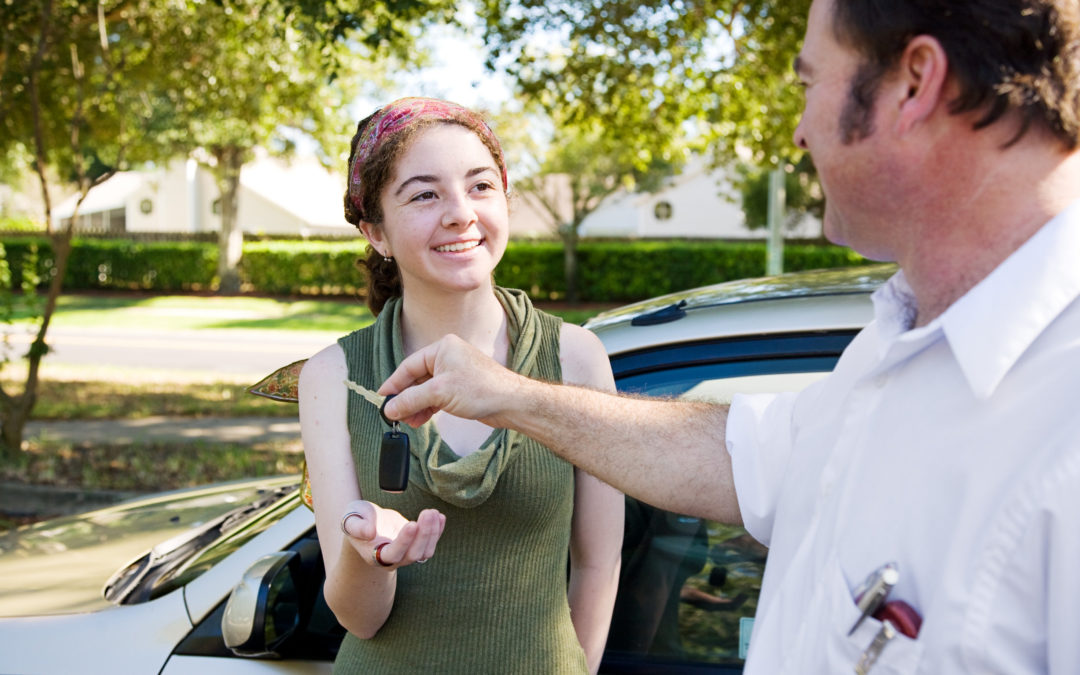Summer is almost here and for many teens that means more freedom and more driving. While parents want their teens to enjoy their breaks from school, this can be a stressful time as we all want to make sure our teens are safe on the road. Even for the most responsible teen drivers, it can be easy to make mistakes as they are still relatively new to the road. So make sure you pass these tips along to the young drivers in your life.
1. Make sure they understand that driving is a major responsibility
As your teen has spent the vast majority of their life in the passenger seat instead of the driver’s seat, it’s understandable that they might see driving as routine, everyday behavior that can be done without much thought. While many teens may be anxious, there are plenty of teens that start driving with a little too much confidence which can be very dangerous. Make sure they understand that while driving is a necessary part of life, it can be extremely dangerous as it places the well-being of yourself and others in your hands.
2. Make sure they are calm and collected behind the wheel
While it’s important for teens to understand the dangers and responsibility of driving, it’s also important for them to be calm and collected. While overconfidence and a lack of focus can be dangerous, so can tunnel vision and panic. If your teen is a nervous or anxious driver, take the time to practice with them and help them gain confidence.
3. Practice, practice, practice
As the expression goes, practice makes perfect. And while there’s no such thing as a perfect driver, safe and controlled practice with an experienced driver helps new drivers develop muscle memory and a feel for their vehicle while they develop the ability to read and react to situations in a calm and collected manner. While we recommend practicing with your teen as a parent, booking time for in-car driver’s training can be even better. While you may be an experienced driver, the use of an experienced driving instructor can make a big difference – and depending on your carrier, these classes may lower the cost of insuring your teen driver.
4. Remove all distractions
From cell phones to sandwiches to fiddling with the radio, anything that takes a driver’s eyes off the road significantly increases the chance of an accident happening. According to the NHTSA, if you take your eyes off the road for 5 seconds at 55 miles per hour, you can travel the length of an entire football field. While teaching teens to put their phone away while driving is an obvious concern, it’s important to teach them about the other smaller distractions like eating while driving or taking their eyes off the road to talk to passengers.
5. Limit the number of passengers
Be sure to obey your state’s provisional licensing laws which limit the number of passengers teens are allowed to drive with at certain ages. As teens learn to drive, having more people in the car can be a major distraction and it is important for them to become more experienced before adding passengers. The studies have shown that these laws really work. In California, it was found that teen motor fatalities decreased 13% and at-fault rate of fatal accidents dropped 14%1 when California implemented a graduated driver licensing law for 16 and 17-year-olds.
6. Limit nighttime driving
Young drivers already have enough on their plates as they learn to drive during the day. When you add in the darkness and added hazards of night driving, things can get dangerous very quickly. The nighttime accident rate for teen drivers is about three times as high as the daytime rate. Not only is visibility a concern, but wildlife-related accidents and encounters with drunk drivers greatly increase at night.
7. Make sure your teens understand the dangers of driving drunk or impaired
According to the NHTSA, “Teens are more likely than anyone else to be killed in an alcohol-related crash. Even though the minimum legal drinking age in every state is 21, data shows 16% of 15- to 18-year-old drivers involved in fatal crashes in 2019 had been drinking. Drugs other than alcohol – illicit as well as prescribed and over-the-counter – can affect your teen’s driving, so be sure you and your teen talk about driving and drug use, too.”
No matter how responsible your teen may be, peer pressure can affect anyone and it’s important to remind your teen of these dangers often. It’s also important for them to understand that if they are on the road and feel that a driver that is near them is driving erratically or impaired, they should be sure to keep their distance.
8. Be a good role model
You can have one hundred conversations with your teen about safe driving but young people tend to learn a lot more by watching and experiencing than just by listening. If you demonstrate bad habits when you’re driving, they are likely to either internalize what you’re doing and repeat those habits or they will tune you out completely. If you’re teaching them proper hand positioning and posture but drive around slouched way back with one hand on the wheel at the 12 o’clock position, they’re going to feel as though your words are unimportant. The “Do as I say, not as I do” lesson simply does not work so make sure you are demonstrating good habits.
If an accident does happen, turn to a class-A autobody shop
While we hope that it never happens, young drivers are just more likely to get into accidents, even really minor ones. We also understand that when your vehicle needs repairs, even for a parking lot fender-bender, it can feel like your life has been turned upside down. That’s why we do everything we can to get your vehicle back on the road. From handling the appraisal to dealing with your insurance company and even providing rental vehicles or helping to tow your vehicle to our shop in some cases – we can help you at every step of the way.
As a class-A autobody shop, when you use Reliable Collision, you can rest assured that your vehicle is in good hands. If you give us a call at (401) 823-4770 or schedule an appointment with us through Carwise, we’ll be happy to help get your vehicle back on the road in tip-top shape.



